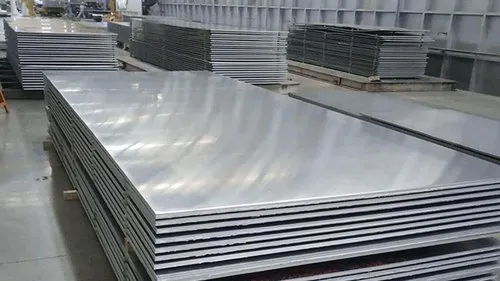Alloy 321 (UNS S32100) is a stable stainless steel plate with a key benefit of excellent resistance to intergranular corrosion when exposed to silicon carbide precipitation temperatures ranging from 800 to 1500°F (427 to 816°C) . By adding titanium, the alloy 321 stainless steel sheet is stabilized against chromium carbide formation.
Alloy 321 stainless steel sheet is also advantageous for high temperature service due to its good mechanical properties. Alloy 321 stainless steel plate has higher creep and stress rupture properties than alloy 304, especially alloy 304L, and can also be considered for susceptibility and intergranular corrosion problems.
Alloy 321 (UNS S32100) is a titanium stabilized austenitic stainless steel plate with good general corrosion resistance. It has excellent resistance to intergranular corrosion in the chromium carbide precipitation temperature range of 800 - 1500°F (427 - 816°C). This alloy is resistant to oxidation to 1500°F (816°C) and has higher creep and stress rupture properties than alloys 304 and 304L. It also has good low temperature toughness.
Alloy 321H (UNS S 32109) stainless steel plate is a higher carbon (0.04 - 0.10) version of the alloy. It was developed to improve creep resistance and has higher strength at temperatures above 1000°F (537°C). In most cases, the carbon content of the plate can be double certified.

Alloy 321 stainless steel plate cannot be hardened by heat treatment and can only be cold worked. It can be easily welded and machined by standard shop fabrication practices.
Alloy 321 stainless steel plate has good general corrosion resistance comparable to 304. It was developed for precipitation of silicon carbide in the 1800 - 1500°F (427 - 816°C) range, where unstable alloys such as 304 attack intergranularly.
The alloy can be used in most diluted organic acids at moderate temperatures, pure phosphoric acid at lower temperatures, and up to 10% diluted solutions at elevated temperatures. Alloy 321 in hydrocarbon service resists polysulfuric acid stress corrosion cracking. It can also be used in chloride or fluorine-free base solutions at moderate temperatures.
Alloy 321 stainless steel plate does not perform well in chloride solutions and cannot be used in sulfuric acid even in small concentrations. Alloy 321 stainless steel sheet can be easily welded and machined by standard shop fabrication practices.
The cold work hardening rate of 321 stainless steel is lower than that of 410 stainless steel, but similar to 304. The table below provides the relevant processing data.